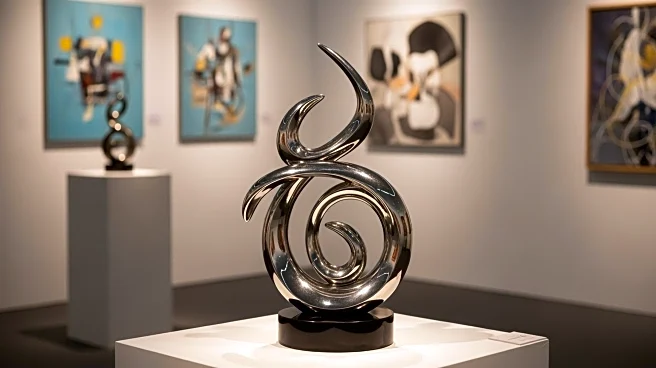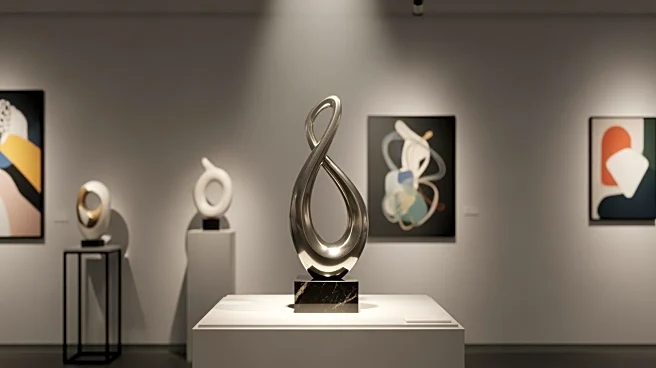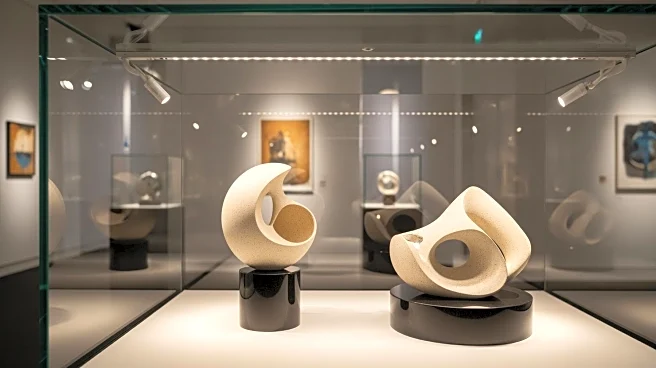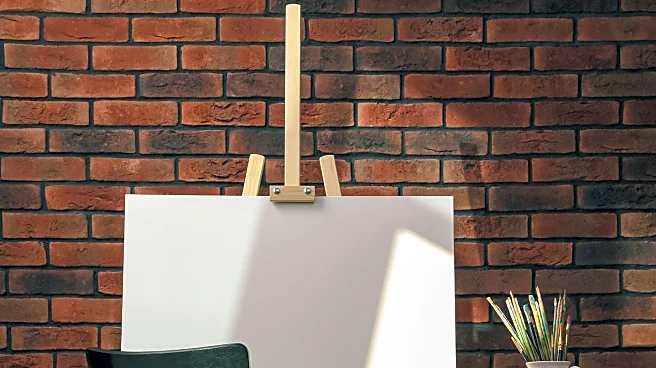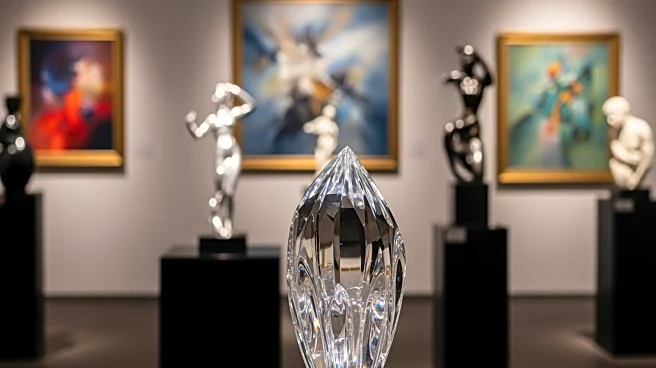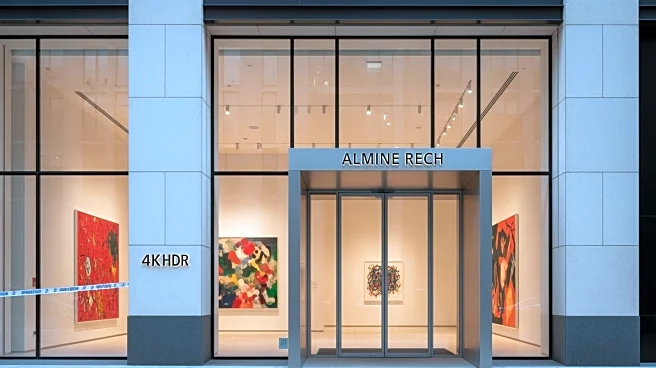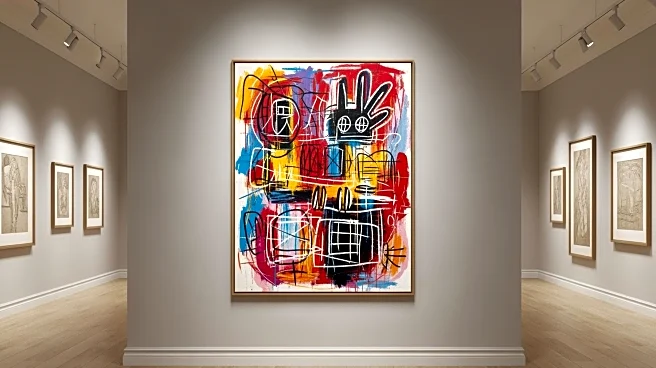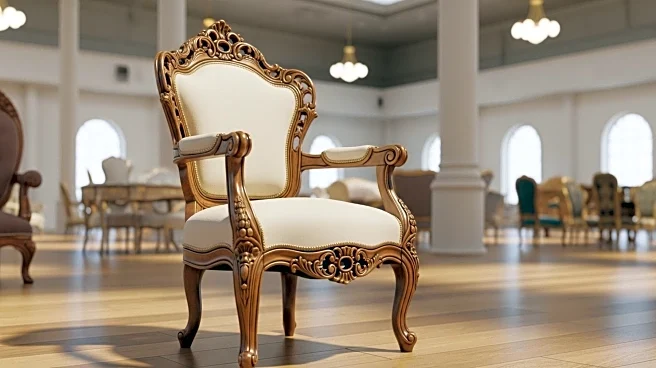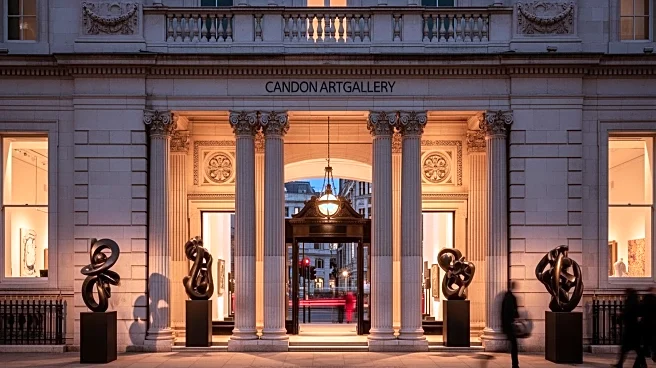What's Happening?
The Pavilion of Art and Design (PAD) in Mayfair's Berkeley Square has experienced a surge in sales activity, signaling a healthy state for the design sector. On the first day of the event, sales commenced
almost immediately after the doors opened, with many booths selling a significant portion of their exhibits by the end of the day. Notable sales included a Judas table by Danish designer Finn Juhl and a birch dining suite by Finnish architect Alvar Aalto. The event also featured works by Maurice Marty, Carlo Bugatti, and Tristano di Robilant, among others. The Parisian gallery Sceners won the prize for the best stand, showcasing a mix of pieces from different periods.
Why It's Important?
The strong sales at PAD highlight the resilience and continued interest in the design sector, even amidst broader economic uncertainties. This trend suggests a robust market for high-end design pieces, which could benefit designers, galleries, and collectors. The event's success also underscores the importance of art and design fairs in driving sales and promoting cultural exchange. The demand for unique and collectible design items indicates a thriving market that supports both established and emerging designers.
What's Next?
As the PAD continues, galleries and designers may anticipate further sales and increased interest in their collections. The event's success could encourage more participation in future editions, potentially expanding the market for design pieces. Collectors and design enthusiasts will likely continue to seek out unique items, driving innovation and creativity in the sector. The positive reception at PAD may also influence other art and design fairs, setting a precedent for future events.
Beyond the Headlines
The PAD's success reflects broader cultural trends, such as the growing appreciation for design as an art form and the increasing value placed on craftsmanship and originality. This shift may lead to a reevaluation of design's role in cultural and economic contexts, potentially influencing public policy and educational programs related to the arts. The event also highlights the global nature of the design market, with international participants and buyers contributing to its vibrancy.
